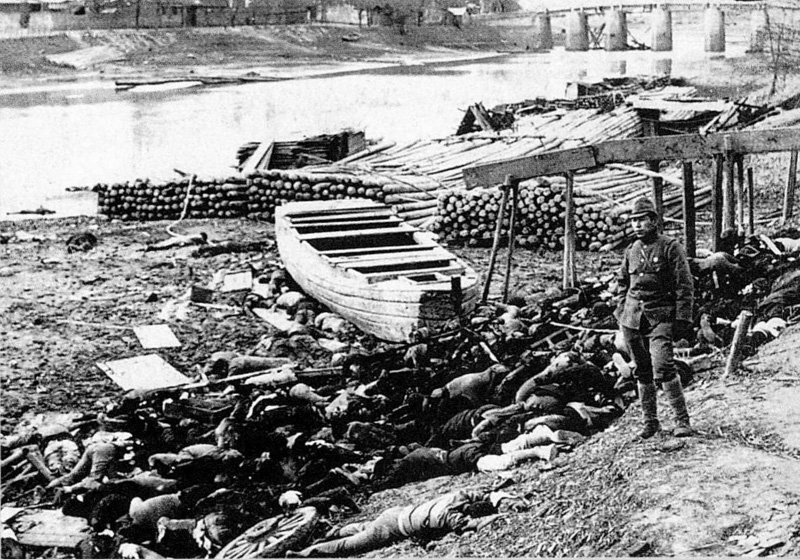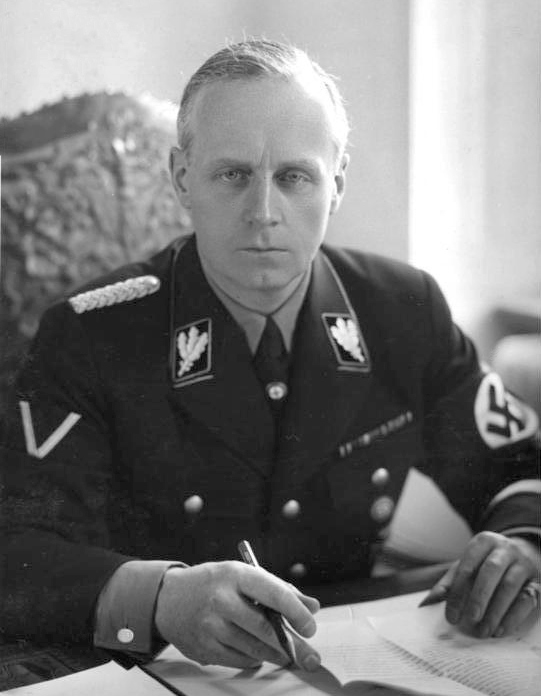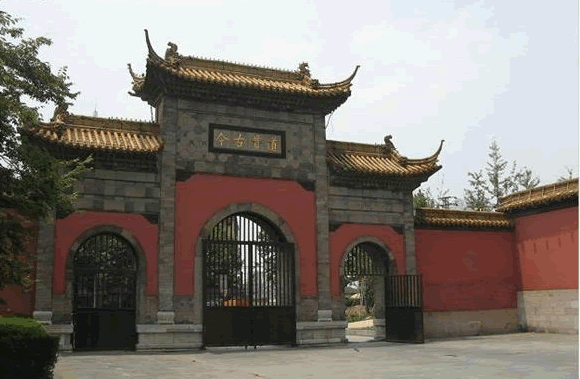|
John Rabe
John Heinrich Detlef Rabe (23 November 1882 – 5 January 1950) was a German businessman and Nazi Party member best known for his efforts to stop war crimes during the Japanese Nanjing Massacre (also known as Nanking) and his work to protect and help Chinese civilians during the massacre that ensued. The Nanking Safety Zone, which he helped to establish, sheltered approximately 250,000 Chinese people from being killed. He officially represented Germany and acted as senior chief of the European-U.S. establishment that remained in Nanjing, the Chinese capital at the time, when the city fell to the Japanese troops. Early life Rabe was born in Hamburg on 23 November 1882. Early career Rabe pursued a career in business. He worked in Africa for several years. In 1908, he left for China, and between 1910 and 1938 worked for the Siemens AG China Corporation in Shenyang, Beijing, Tianjin, Shanghai and later Nanjing. Rabe suffered from diabetes by the time he worked in Nanjin ... [...More Info...] [...Related Items...] OR: [Wikipedia] [Google] [Baidu] |
Hamburg
(male), (female) en, Hamburger(s), Hamburgian(s) , timezone1 = Central (CET) , utc_offset1 = +1 , timezone1_DST = Central (CEST) , utc_offset1_DST = +2 , postal_code_type = Postal code(s) , postal_code = 20001–21149, 22001–22769 , area_code_type = Area code(s) , area_code = 040 , registration_plate = , blank_name_sec1 = GRP (nominal) , blank_info_sec1 = €123 billion (2019) , blank1_name_sec1 = GRP per capita , blank1_info_sec1 = €67,000 (2019) , blank1_name_sec2 = HDI (2018) , blank1_info_sec2 = 0.976 · 1st of 16 , iso_code = DE-HH , blank_name_sec2 = NUTS Region , blank_info_sec2 = DE6 , website = , footnotes ... [...More Info...] [...Related Items...] OR: [Wikipedia] [Google] [Baidu] |
Shanghai
Shanghai (; , , Standard Mandarin pronunciation: ) is one of the four direct-administered municipalities of the People's Republic of China (PRC). The city is located on the southern estuary of the Yangtze River, with the Huangpu River flowing through it. With a population of 24.89 million as of 2021, Shanghai is the most populous urban area in China with 39,300,000 inhabitants living in the Shanghai metropolitan area, the second most populous city proper in the world (after Chongqing) and the only city in East Asia with a GDP greater than its corresponding capital. Shanghai ranks second among the administrative divisions of Mainland China in human development index (after Beijing). As of 2018, the Greater Shanghai metropolitan area was estimated to produce a gross metropolitan product ( nominal) of nearly 9.1 trillion RMB ($1.33 trillion), exceeding that of Mexico with GDP of $1.22 trillion, the 15th largest in the world. Shanghai is one of the world's major centers for f ... [...More Info...] [...Related Items...] OR: [Wikipedia] [Google] [Baidu] |
Death Toll Of The Nanking Massacre
The total death toll of the Nanjing Massacre is a highly contentious subject in Chinese and Japanese historiography. Following the outbreak of the Second Sino-Japanese War, the Japanese Imperial Army marched from Shanghai to the Chinese capital city of Nanking, and though a large number of Chinese POWs and civilians were slaughtered by the Japanese following their entrance into Nanking on December 13, 1937, the precise number remains unknown. Since the late-1960s when the first academic works on the Nanking Massacre were produced, estimating the approximate death toll of the massacre has been a major topic of scholarly debate. Currently, the most reliable and widely agreed upon figures place the massacre victims within Nanjing City Walls to be around 40,000, mostly massacred in the first five days from December 13, 1937; while the total victims massacred as of the end of March 1938 in both Nanjing and its surrounding six rural counties far exceed 100,000 but fall short of 200,00 ... [...More Info...] [...Related Items...] OR: [Wikipedia] [Google] [Baidu] |
Nanking Massacre
The Nanjing Massacre (, ja, 南京大虐殺, Nankin Daigyakusatsu) or the Rape of Nanjing (formerly romanized as ''Nanking'') was the mass murder of Chinese civilians in Nanjing, the capital of the Republic of China, immediately after the Battle of Nanking in the Second Sino-Japanese War, by the Imperial Japanese Army. Beginning on December 13, 1937, the massacre lasted six weeks. The perpetrators also committed other war crimes such as mass rape, looting, and arson. The massacre was one of the worst atrocities committed during World War II. The Japanese Army had pushed quickly through China after capturing Shanghai in November 1937. By early December, it was on the outskirts of Nanjing. The speed of the army's advance was likely due to commanders allowing looting and rape along the way. As the Japanese approached, the Chinese army withdrew the bulk of its forces since Nanjing was not a defensible position. The civilian government of Nanjing fled, leaving the city under ... [...More Info...] [...Related Items...] OR: [Wikipedia] [Google] [Baidu] |
Ma Chao-chun
 Ma Chao-chun (; Pinyin: ''Mǎ Chāojùn''; 1886–1977) was the mayor of Nanjing in the period prior to the Battle of Nanking. On December 1, 1937, Ma Chao-chun ordered all Chinese citizens remaining in Nanking to move into the Nanking Safety Zone. Ma fled the city on December 7, and the International Committee for the Nanking Safety Zone, International Committee took over as the de facto government of Nanjing.
Republic of China politicians from Guangdong
Mayors of Nanjing
People from Taishan, Guangdong
Kuomintang politicians in Taiwan
1886 births
1977 deaths
Politicians from Jiangmen
{{China-politician-stub ...
Ma Chao-chun (; Pinyin: ''Mǎ Chāojùn''; 1886–1977) was the mayor of Nanjing in the period prior to the Battle of Nanking. On December 1, 1937, Ma Chao-chun ordered all Chinese citizens remaining in Nanking to move into the Nanking Safety Zone. Ma fled the city on December 7, and the International Committee for the Nanking Safety Zone, International Committee took over as the de facto government of Nanjing.
Republic of China politicians from Guangdong
Mayors of Nanjing
People from Taishan, Guangdong
Kuomintang politicians in Taiwan
1886 births
1977 deaths
Politicians from Jiangmen
{{China-politician-stub ...
[...More Info...] [...Related Items...] OR: [Wikipedia] [Google] [Baidu] |
Anti-Comintern Pact
The Anti-Comintern Pact, officially the Agreement against the Communist International was an anti-Communist pact concluded between Nazi Germany and the Empire of Japan on 25 November 1936 and was directed against the Communist International (Comintern). It was signed by German ambassador-at-large Joachim von Ribbentrop and Japanese ambassador to Germany Kintomo Mushanokōji. Italy joined in 1937, but it was legally recognised as an original signatory by the terms of her entry. Spain and Hungary joined in 1939. Other countries joined during World War II. The Japanese signatories had hoped that the Anti-Comintern Pact would effectively be an alliance against the Soviet Union, which is certainly how the Soviets perceived it. There was also a secret additional protocol which specified a joint German-Japanese policy specifically aimed against the Soviet Union. However, after the accession of Fascist Italy to the pact and especially the German-Soviet rapprochement after the Molotov ... [...More Info...] [...Related Items...] OR: [Wikipedia] [Google] [Baidu] |
Nanking University
Nanjing University (NJU; ) is a national public research university in Nanjing, Jiangsu. It is a member of C9 League and a Class A Double First Class University designated by the Chinese central government. NJU has two main campuses: the Xianlin campus in the northeast of Nanjing, and the Gulou campus in the city center of Nanjing. Established in 1902 as Sanjiang Normal School, Nanjing University underwent a number of name changes, such as Nanjing Higher Normal School, National Southeastern University and National Central University, until it was renamed Nanjing University in 1950. It merged with the University of Nanking in 1952. NJU is perennially ranked one of the best research universities in China, and one of the most selective universities in the nation. As of 2022, Nanjing University ranked 7th in China and 95th globally by Times Higher Education World University Rankings. Regarding scientific research output, the Nature Index Annual Table 2022 ranked Nanjing Universi ... [...More Info...] [...Related Items...] OR: [Wikipedia] [Google] [Baidu] |
Embassy
A diplomatic mission or foreign mission is a group of people from a state or organization present in another state to represent the sending state or organization officially in the receiving or host state. In practice, the phrase usually denotes an embassy, which is the main office of a country's diplomatic representatives to another country; it is usually, but not necessarily, based in the receiving state's capital city. Consulates, on the other hand, are smaller diplomatic missions that are normally located in major cities of the receiving state (but can be located in the capital, typically when the sending country has no embassy in the receiving state). As well as being a diplomatic mission to the country in which it is situated, an embassy may also be a nonresident permanent mission to one or more other countries. The term embassy is sometimes used interchangeably with chancery, the physical office or site of a diplomatic mission. Consequently, the terms "embassy resi ... [...More Info...] [...Related Items...] OR: [Wikipedia] [Google] [Baidu] |
International Committee For The Nanking Safety Zone
The International Committee was established in 1937 order to establish and manage the Nanking Safety Zone. Many Westerners were living in the city at that time, conducting trade or on missionary trips. As the Imperial Japanese Army began to approach Nanjing (also known as Nanking), most of them fled the city. A small number of Western businessmen, journalists and missionaries, however, chose to remain behind. The missionaries were primarily Americans from the Episcopal, Disciples of Christ, Presbyterian, and Methodist churches. To coordinate their efforts, the Westerners formed a committee: the International Committee for the Nanking Safety Zone. German businessman John Rabe was elected as its leader, partly because of his status as a member of the Nazi party, and the existence of the German–Japanese bilateral Anti-Comintern Pact. Rabe and other refugees from foreign countries tried to protect the civilians from being killed by the Japanese. The Japanese army did not complet ... [...More Info...] [...Related Items...] OR: [Wikipedia] [Google] [Baidu] |
Reader's Digest
''Reader's Digest'' is an American general-interest family magazine, published ten times a year. Formerly based in Chappaqua, New York, it is now headquartered in midtown Manhattan. The magazine was founded in 1922 by DeWitt Wallace and his wife Lila Bell Wallace. For many years, ''Reader's Digest'' was the best-selling consumer magazine in the United States; it lost the distinction in 2009 to '' Better Homes and Gardens''. According to Mediamark Research (2006), ''Reader's Digest'' reached more readers with household incomes of over $100,000 than ''Fortune'', ''The Wall Street Journal'', ''Business Week'', and '' Inc.'' combined. Global editions of ''Reader's Digest'' reach an additional 40 million people in more than 70 countries, via 49 editions in 21 languages. The periodical has a global circulation of 10.5 million, making it the largest paid-circulation magazine in the world. It is also published in Braille, digital, audio, and a large type called "Reader's Digest Large ... [...More Info...] [...Related Items...] OR: [Wikipedia] [Google] [Baidu] |
Imperial Japanese Army
The was the official ground-based armed force of the Empire of Japan from 1868 to 1945. It was controlled by the Imperial Japanese Army General Staff Office and the Ministry of the Army, both of which were nominally subordinate to the Emperor of Japan as supreme commander of the army and the Imperial Japanese Navy. Later an Inspectorate General of Aviation became the third agency with oversight of the army. During wartime or national emergencies, the nominal command functions of the emperor would be centralized in an Imperial General Headquarters (IGHQ), an ad hoc body consisting of the chief and vice chief of the Army General Staff, the Minister of the Army, the chief and vice chief of the Naval General Staff, the Inspector General of Aviation, and the Inspector General of Military Training. History Origins (1868–1871) In the mid-19th century, Japan had no unified national army and the country was made up of feudal domains (''han'') with the Tokugawa shogunate (''bakufu ... [...More Info...] [...Related Items...] OR: [Wikipedia] [Google] [Baidu] |
Missionary
A missionary is a member of a religious group which is sent into an area in order to promote its faith or provide services to people, such as education, literacy, social justice, health care, and economic development.Thomas Hale 'On Being a Missionary' 2003, William Carey Library Pub, . In the Latin translation of the Bible, Jesus Christ says the word when he sends the disciples into areas and commands them to preach the gospel in his name. The term is most commonly used in reference to Christian missions, but it can also be used in reference to any creed or ideology. The word ''mission'' originated in 1598 when Jesuits, the members of the Society of Jesus sent members abroad, derived from the Latin ( nom. ), meaning 'act of sending' or , meaning 'to send'. By religion Buddhist missions The first Buddhist missionaries were called "Dharma Bhanaks", and some see a missionary charge in the symbolism behind the Buddhist wheel, which is said to travel all over the earth brin ... [...More Info...] [...Related Items...] OR: [Wikipedia] [Google] [Baidu] |









